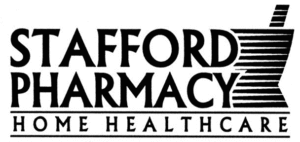The recent issue of the Reader’s Digest that we regularly receive at the pharmacy, included an article that shared the results of their recent survey of readers, to see what professions have earned the trust of their readership. This is not the first such survey done, as I am aware of at least three other such surveys done in the past five years. The format of each is slightly different but what is in common is that the Pharmacist has consistently placed in the top ten and like the Reader’s Digest Survey, the last two survey’s I have been aware of, have found the Pharmacist to be in the Top Five.
So, what does that mean?
Well, to a pharmacist such as myself I’ve taken that to mean that consumers have come to trust pharmacists for their knowledge, honesty, integrity and professionalism. That’s a mouthful but it says that consumers look to pharmacists as reliable sources of accurate health and drug information. This hasn’t happened over night by the way, as the profession has been working for years to establish a professional culture that includes raised standards of practice as well as new practice authorities.
Before entering the profession pharmacists must complete five to six years of University study to gain the knowledge base and the clinical background necessary for a pharmacist. After completing their education they must then pass a comprehensive national exam that tests their knowledge from those four years. Finally they must pass a licensing exam which is done in person as an experiential test. Then and only then will the pharmacist gain license to practice in that particular province. Of course, every year we are required to maintain our continued education through lectures, courses, self-study and online learning.
As a result of legislative changes, pharmacists can now make certain adaptations to prescriptions as written. For example, changes can be made to the prescription with respect to brands of medication, or even therapeutic substitutions within specific guidelines. Pharmacists can adapt a prescription to the extent that a patient requires say an additional two or three weeks of their prescribed medications, despite the fact that their prescription refills have been all used. That means the pharmacist under his/her own authority can prescribe say another three weeks of medications for a patient, giving them time to make an appointment with their physician and to get the prescription re-prescribed.
Of course the most significant new authority given to pharmacists has been the ability to prescribe new medications. This can only be done after a pharmacist has applied and been accepted for advanced prescribing, a very thorough and demanding process. This explains why there are only approximately 150 pharmacists who hold this advanced designation, when there are about 4000 pharmacists currently licensed in the province of Alberta and able to pursue this designation.
Yes, pharmacists should be ranked highly as one of the most trusted individuals. It’s not easy to become a pharmacist and it’s not easy maintaining the required standards and competency. We do this however, not to make it difficult but to ensure that the pharmacist that you meet with at the community pharmacy, maintains the highest professional standards which are second to no other profession. So, it’s nice to know from time to time that all our efforts are being recognized. And we’ll keep working to become the number one trusted professional.


